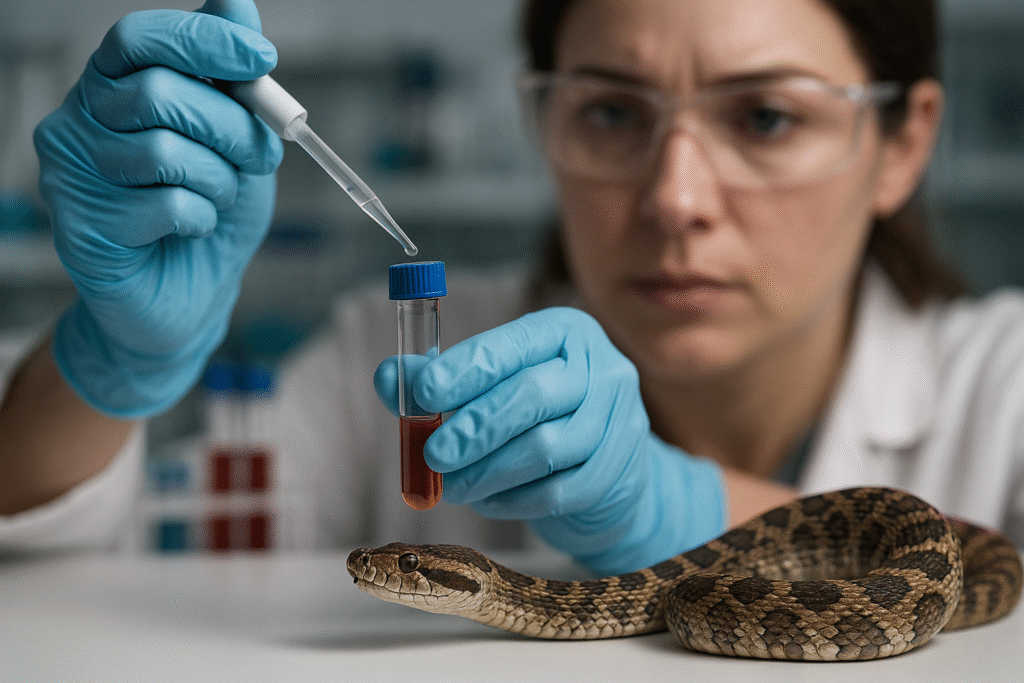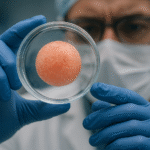By Harshit | October 7, 2025 | San Francisco, USA | 10:00 AM EDT
A Silent Global Health Crisis
Snakebites remain one of the world’s most neglected health emergencies. According to the World Health Organization (WHO), around 5.4 million people are bitten by snakes each year, with up to 138,000 deaths and hundreds of thousands more left permanently disabled. The burden falls disproportionately on rural communities in Asia, Africa, and Latin America, where access to medical facilities and lifesaving antivenom is limited.
For more than a century, snakebite treatment has relied on species-specific antivenoms developed by immunizing animals—typically horses—with venom and extracting antibodies. While lifesaving, these treatments are costly, difficult to produce, require refrigeration, and often cause severe allergic reactions. Moreover, each antivenom works only against a narrow group of snakes, leaving many victims without suitable treatment.
The Breakthrough: Human-Derived Antibodies
A new scientific approach could radically transform this landscape. Researchers led by Centivax CEO Jacob Glanville, working with international collaborators, have developed what could become the world’s first universal snake antivenom using rare human antibodies.
The innovation stems from the unusual biology of Tim Friede, a self-taught herpetologist who has survived more than 800 intentional snakebites over two decades. Through repeated, controlled exposures to lethal species—including cobras, mambas, taipans, and rattlesnakes—Friede developed a form of hyperimmunity. His blood contains rare antibodies capable of neutralizing multiple venom toxins.
Using just a 40-millilitre sample of his blood, scientists at Centivax, the National Institutes of Health (NIH), Columbia University, and other institutions isolated and engineered antibodies that target venom components shared across species. These antibodies were formulated into a cocktail therapy designed to block the most dangerous classes of toxins.
How the Universal Antivenom Works
Snake venom is a complex mixture of 50–70 toxins, each capable of damaging the body in different ways—from destroying blood cells and tissues to paralyzing the nervous system. Traditional antivenoms usually address only a small subset of these.
The new cocktail includes three powerful components:
- LNX-D09 – Neutralizes long-chain neurotoxins that impair nerve-to-muscle communication.
- SNX-B03 – Blocks short-chain neurotoxins, another potent class found in cobras and other elapids.
- Varespladib – A small molecule inhibitor that disables phospholipase A2 toxins, which trigger tissue necrosis, inflammation, and blood clotting disorders.
When tested in laboratory mice, this combination provided protection against venom from 19 snake species worldwide. In 13 of those cases, the antivenom fully neutralized toxicity; in six others, symptoms were significantly reduced.
Expert Reactions
“This is the most promising advance in snakebite treatment in more than a century,” said Kartik Sunagar, evolutionary toxinologist at the Indian Institute of Science. By targeting toxin families common across species, he explained, researchers can potentially neutralize venoms from snakes across continents.
Not all experts are convinced that a single “universal” solution will work everywhere. Andreas Hougaard Laustsen-Kiel, an antivenom researcher at the Technical University of Denmark, cautioned that regional venom variations—such as differences between African vipers and American rattlesnakes—may require more than one formulation.
Still, most agree that human monoclonal antibodies are a safer alternative to animal-derived serums, with reduced risk of allergic reactions and more consistent performance.
Challenges Ahead
Despite the promising results, major hurdles remain. Producing monoclonal antibody therapies at scale is expensive, potentially limiting access in the low-income regions most affected by snakebites. Manufacturing infrastructure would need to be expanded dramatically for global deployment.
Regulatory approval is another challenge. Human clinical trials are still pending, and demonstrating safety and effectiveness across diverse snake species will take years. Researchers are also working on formulations specifically against vipers, which cause a large share of fatalities in Asia and Africa.
Wider Applications
The potential impact of this research goes beyond humans. Trials are already underway in Australia on pet dogs, which are frequently bitten by venomous snakes. If successful, the technology could lead to veterinary applications, expanding the market and accelerating production.
Synthetic antibodies are also being investigated as a platform for other neglected tropical diseases, potentially revolutionizing treatments where traditional approaches have failed.
A Turning Point?
For decades, snakebite victims in underserved regions have faced a grim reality: survival often depended not just on reaching a hospital, but on whether the correct species-specific antivenom was available. A broad-spectrum, human-derived treatment could change that paradigm, saving tens of thousands of lives each year.
As Sunagar summarized: “Achieving broad neutralization is not the challenge anymore. The challenge is making it affordable and accessible to those who need it most.”
If scientists and policymakers can overcome the financial and logistical barriers, the universal snake antivenom could become one of the most significant milestones in global health innovation of the 21st century.







